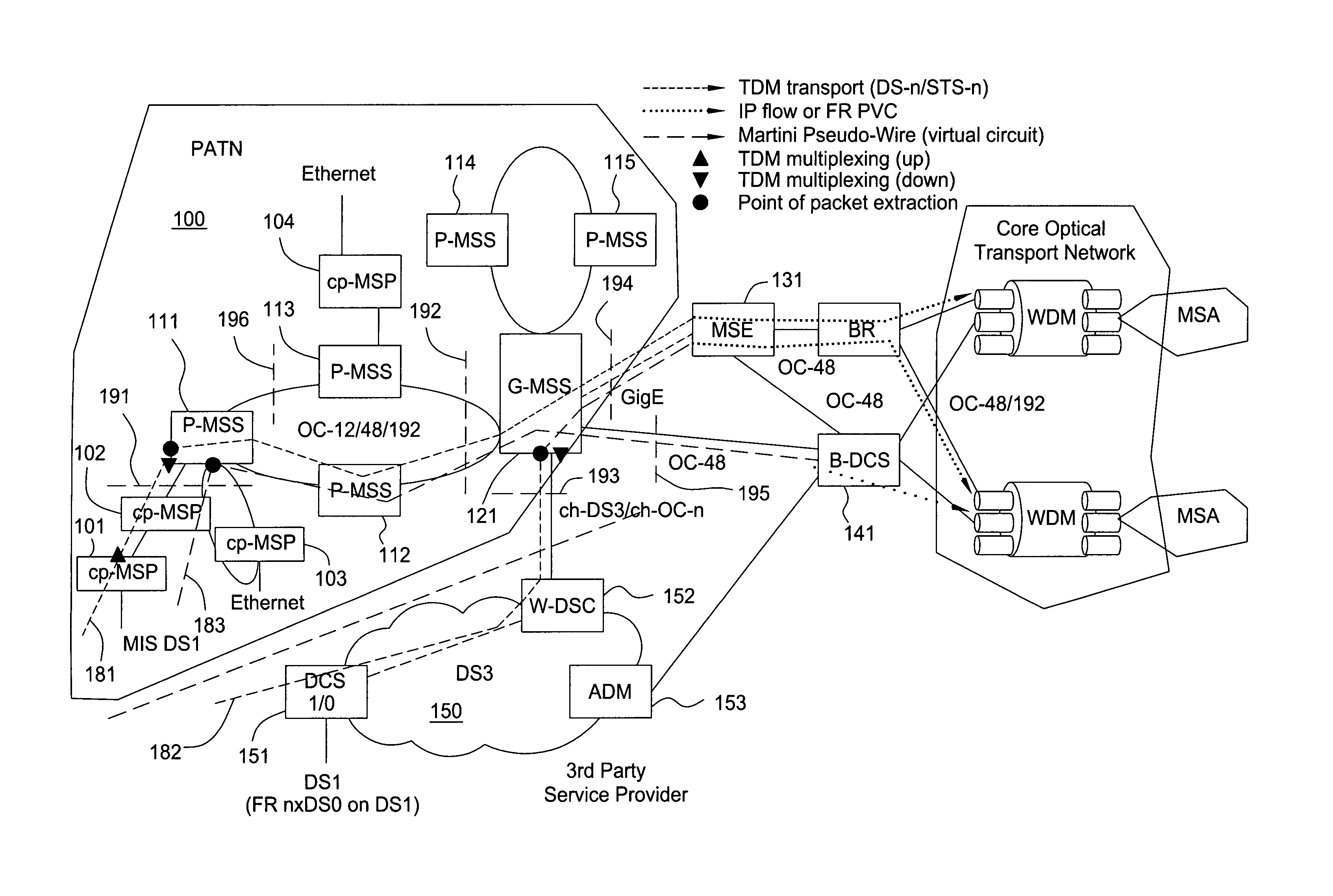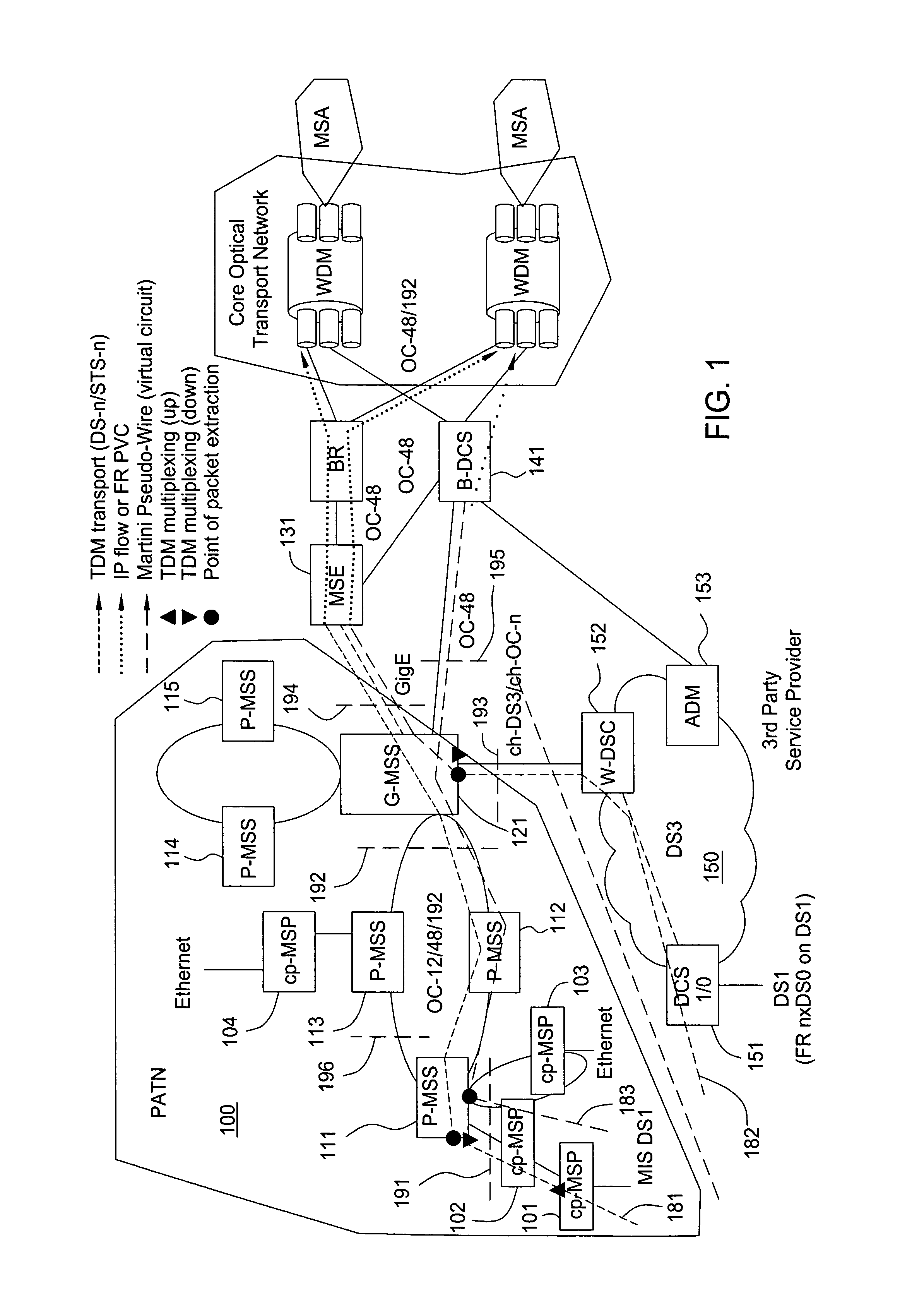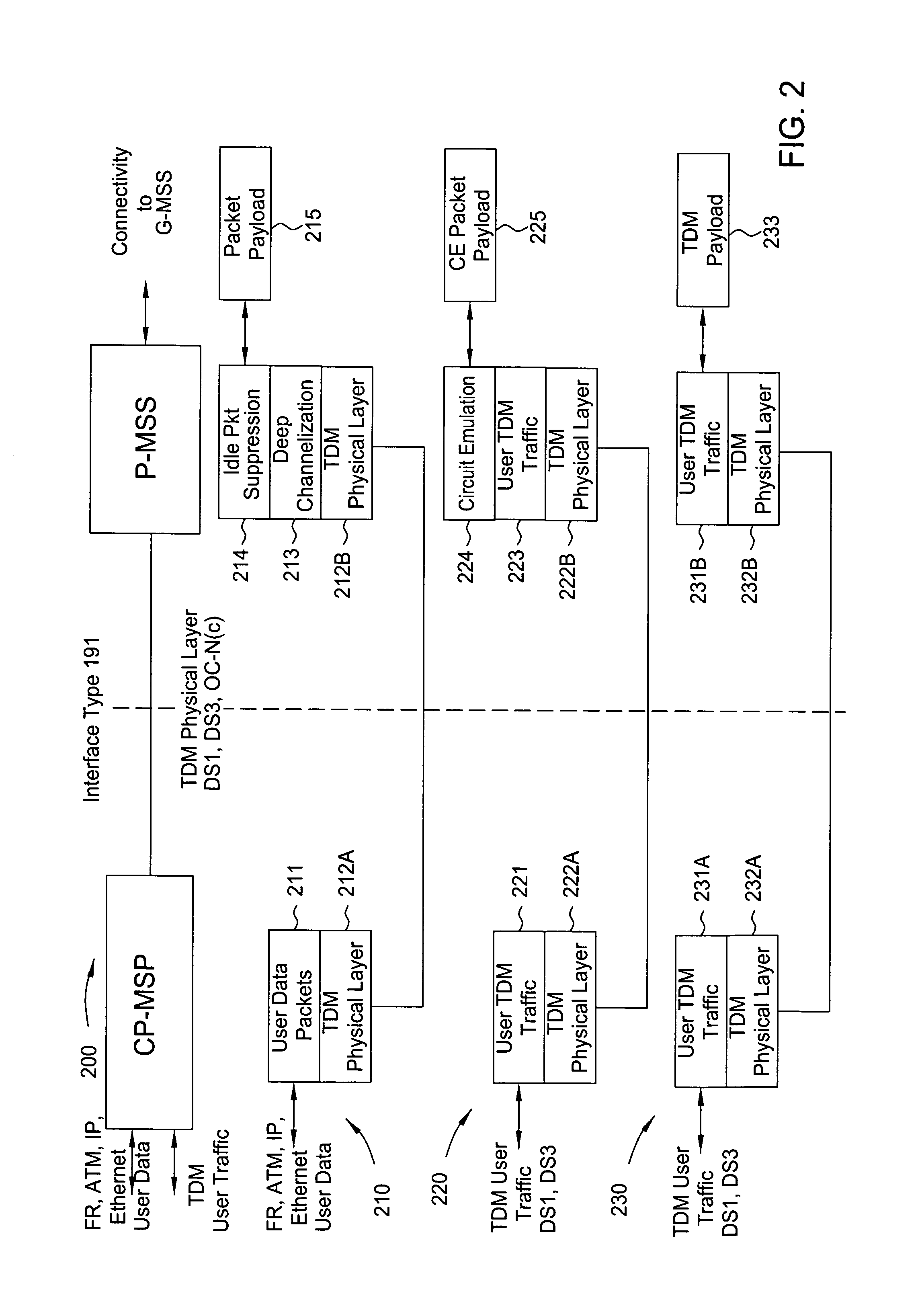Network architecture for a packet aware transport network
a network architecture and transport network technology, applied in the field of network architecture for a packet aware transport network, can solve the problems of consuming precious space, network cannot take advantage of statistical multiplexing across these access circuits, and the interfaces of tdms do not lend themselves to efficient transport of bursty packet data, etc., and achieve the effect of cost-effectiveness
- Summary
- Abstract
- Description
- Claims
- Application Information
AI Technical Summary
Benefits of technology
Problems solved by technology
Method used
Image
Examples
Embodiment Construction
[0021]Most metro telecommunications transport carriers interface with customer equipment (routers, servers, voice switches, etc.) via the legacy TDM signal rates (DS0, DS1, DS3, SONET OC-3, OC-12 in North America). This is due to historical evolution of digital transmission rates and the fact that the SONET standard specifies adaptation of these particular rates. The services offered by metro carriers are classified into five broad classes: private line, packet network access, Ethernet (two varieties) and voice access. Private line is TDM transport of a signal at the above rates between two customer (or other carrier) interfaces. Packet network access is transport of packets between a customer interface and packet network service that is provided by the same or another carrier. Ethernet point-to-point connections are a virtual circuit service, usually between two Ethernet interfaces at different customer locations. Ethernet transparent LAN service is a multipoint-to-multipoint servi...
PUM
 Login to View More
Login to View More Abstract
Description
Claims
Application Information
 Login to View More
Login to View More - R&D
- Intellectual Property
- Life Sciences
- Materials
- Tech Scout
- Unparalleled Data Quality
- Higher Quality Content
- 60% Fewer Hallucinations
Browse by: Latest US Patents, China's latest patents, Technical Efficacy Thesaurus, Application Domain, Technology Topic, Popular Technical Reports.
© 2025 PatSnap. All rights reserved.Legal|Privacy policy|Modern Slavery Act Transparency Statement|Sitemap|About US| Contact US: help@patsnap.com



